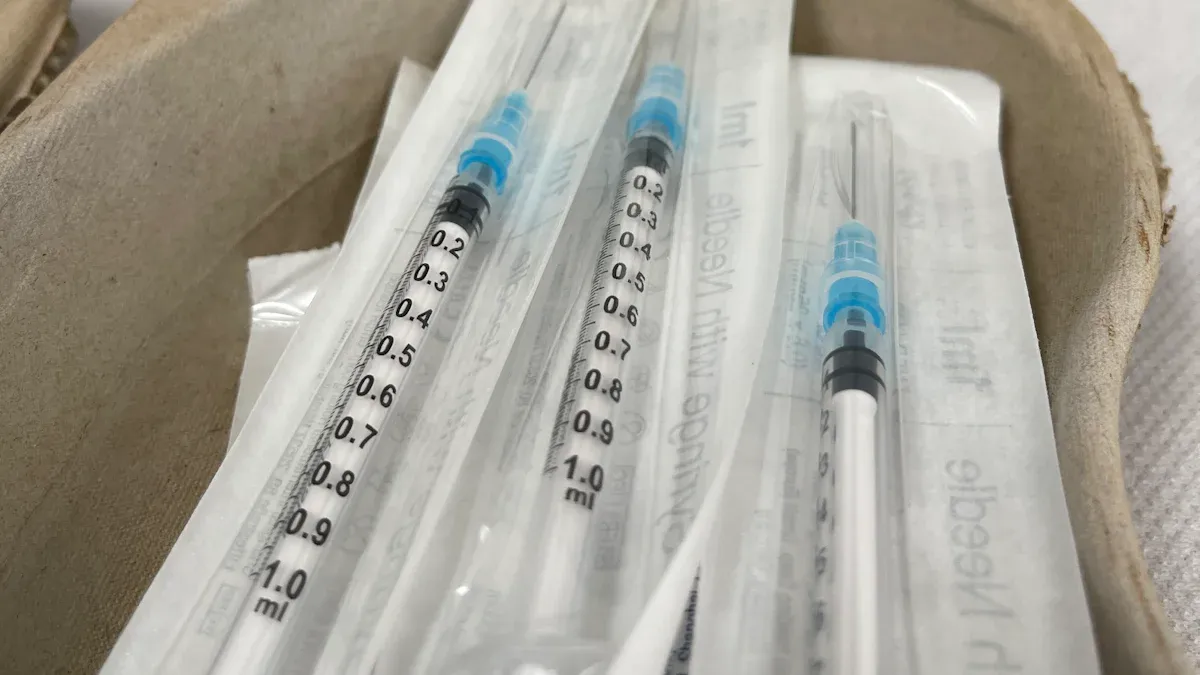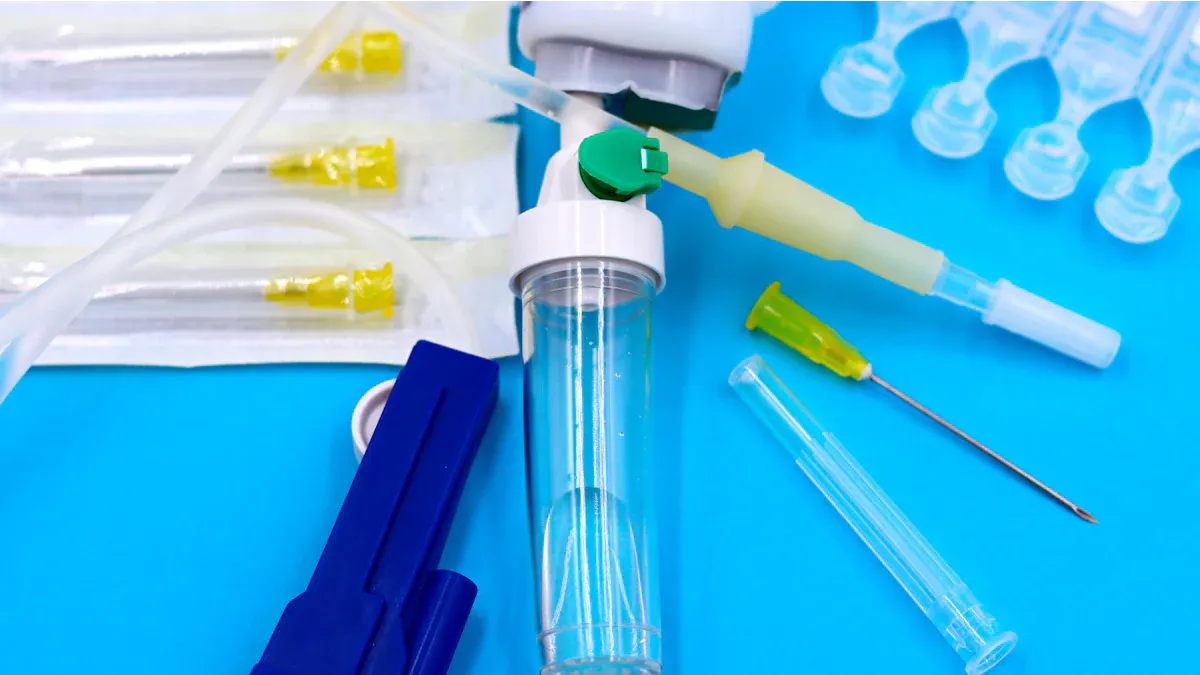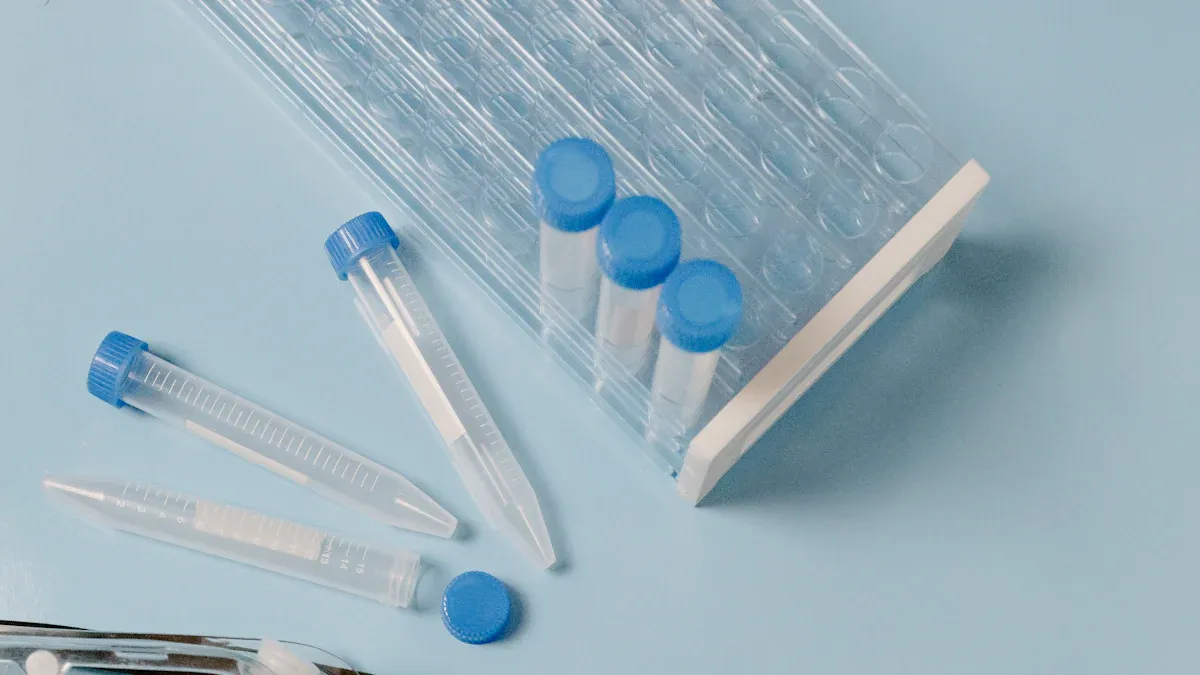Top 3 Types of Polyimide Tubing for Medical Devices

Polyimide tubing for medical devices has transformed how healthcare utilizes strong, flexible tools. It is tough, bendable, and safe for the body, making it extremely useful for various medical applications. Choosing the right polyimide tubing for medical devices enhances the performance of these tools. It is excellent for tests or treatments, as these tubes help devices operate efficiently, reduce risks, and improve patient care.
Key Takeaways
Polyimide tubing is strong, bendable, and safe for medical tools. It works well in devices like catheters and sensors.
Regular polyimide tubing handles high heat, making it reliable for medical uses.
Polyimide coated tubing has a smooth surface. This lowers friction, helps catheters move easily, and stops infections.
Polyimide composite tubing is strong but light. It is great for advanced medical tools that need to be tough and easy to use.
Picking the right polyimide tubing depends on medical needs, like heat safety and body compatibility.
Standard Polyimide Tubing

Features of Standard Polyimide Tubing
Standard polyimide tubing works well because of its strong materials. It can handle very high heat, making it great for hot environments. The tubing is tough and bendable, so it performs well in hard conditions. It also blocks heat and electricity, making it useful in many fields.
This tubing comes in different inner sizes with thin walls. It can be customized to fit specific needs. Its tight measurements ensure it works the same every time, even in tricky tasks. Multi-layered types, like PI and PI Glide™, make it more flexible and less likely to kink. Reinforced options include braid patterns that improve how it moves and bends.
Benefits in Medical Applications
Standard polyimide tubing is very helpful in medical tools. It works well with catheters, fitting into small spaces without losing strength. Its heat and chemical resistance make it safe for medical use.
Medical sensors with this tubing can find tiny amounts of substances, like urea, very accurately. For example, they can detect urea levels much lower than normal blood levels. These sensors work fast, often in under a minute, helping doctors save time. Plus, the tubing is cheap to make, so it’s easy to use widely.
Common Medical Device Use Cases
This tubing is common in catheter-based tools. Its flexibility and strength help it move through blood vessels easily. It improves how catheters push and turn, making procedures more accurate. It’s also used in neural electrodes, pressure sensors, and energy devices, showing its many uses.
In catheter systems, the tubing stays strong under pressure. Lower braid patterns make it easier to push, while higher ones make it bend better. These features make it a key part of advanced medical tools that need to be precise and reliable.
Polyimide Coated Tubing
Features of Polyimide Coated Tubing
Polyimide coated tubing is special because of its strong surface. The coating makes it smoother, so it moves easily. It is safe for the body and helps prevent infections. This makes it great for medical use.
Different coatings have unique strengths and uses. The table below shows how they differ:
Type of Polyimide | Heat Resistance | Strength | Chemical Resistance | Cost | Solubility |
|---|---|---|---|---|---|
Thermosetting PI | High | High | High | High | Low |
Aromatic PI | Highest | Highest | Highest | Highest | Lowest |
Semi-aromatic PI | Moderate | Moderate | Moderate | Moderate | Better |
Aliphatic PI | Lowest | Lowest | Lowest | Lowest | Highest |
This variety helps pick the right coating for each job.
Advantages for Medical Devices
Polyimide coated tubing has many benefits for medical tools. The smooth coating helps catheters move better and turn easily. This is important for guiding catheters through blood vessels. The coating also makes the tubing last longer, even with repeated use.
It stops germs from causing infections, which is good for implants. The coating is safe for the body, making it useful in many medical tools. These features make it a top choice for advanced devices.
Specific Applications in Medical Devices
Polyimide coated tubing is used in many medical tools. Its small size works well for catheters in veins or other areas. The smooth coating helps catheters move through the body easily.
It is also used as a tube for guidewires, making them stronger and smoother. The tubing is great for insulated wires, as the coating protects and reduces friction. The table below shows its uses:
Application Type | Description |
|---|---|
Catheters | Used for small, smooth catheters in veins or urinary systems. |
Lumen For Guidewires | Makes guidewires stronger and easier to use. |
Lead Wire (Insulated Wire) | Protects wires and lowers friction with a strong coating. |
These uses show how important polyimide coated tubing is in modern medicine.
Polyimide Composite Tubing

Features of Polyimide Composite Tubing
Polyimide composite tubing is made by mixing polyimide with other strong materials. This makes it tough and useful for many purposes. It can handle very high heat, up to 335 °C (635 °F). Its glass transition temperature is 414 °C (777 °F). These features make it great for tough jobs like in space or medical tools. It is also lighter than metal, which helps in making lightweight designs.
Here’s a table showing its key features:
Feature | Detail |
|---|---|
Glass Transition Temperature | 414 °C (777 °F) |
Increased Use Temperature | 55 °C (100 °F) higher than PMR-15 composites |
Operational Temperature Range | Up to 335 °C (635 °F) |
Applications | Used in planes, bushings, bearings, oil drilling, and heat coatings |
Weight Savings | Much lighter than metal materials |
Suitability for Aerospace | Perfect for plane engines and reusable space vehicles |
These qualities make it a great choice for small tubes in medical tools.
Benefits for Complex Medical Applications
Polyimide composite tubing is very helpful for tricky medical tasks. It can handle high heat, so it works well during cleaning. Its light weight makes medical tools easier to use. The tubing is strong and flexible, helping catheters move through tiny blood vessels smoothly.
It is safe for the body, so it’s good for catheters and other sensitive tools. It also stays strong in tough conditions, making it perfect for advanced medical devices.
Use Cases in Advanced Medical Devices
Polyimide composite tubing is important in modern medical tools. It is often used in catheters because it is easy to push and turn. Its small size helps it fit into narrow blood vessels, which is crucial for vascular catheters.
Besides catheters, it is used in medical sensors and insulated wires. Its strength and heat resistance make it reliable for repeated cleaning and long-term use. These features make polyimide composite tubing a key part of new medical technologies.
Comparing the Top 3 Types of Polyimide Tubing for Medical Devices
Key Differences in Features and Performance
Each type of polyimide tubing has special features for medical use. Standard polyimide tubing is flexible and handles heat well, making it great for catheters. Polyimide coated tubing has a smooth surface and lasts longer. It works best where less friction and better body safety are needed. Polyimide composite tubing mixes polyimide with strong materials like carbon fibers. This makes it very strong and lightweight.
The table below shows how these tubing types perform differently:
Type of Tubing | Filler | Tensile Stress (MPa) | Elongation at Break (%) | Bending Strength (MPa) | Modulus of Elasticity (MPa) |
|---|---|---|---|---|---|
Standard Polyimide | N/A | N/A | N/A | N/A | N/A |
Polyimide Coated | N/A | N/A | N/A | N/A | N/A |
Polyimide Composite | Carbon Nanotubes (SWCNT 1.0%) | 94 | 36 | N/A | N/A |
Polyimide Composite | Carbon Nanotubes (SWCNT 2.0%) | 107.7 | 130.9 | N/A | N/A |
Polyimide Composite | Carbon Fibers (Carbon fabric) | N/A | N/A | 32 | 2355 |
Polyimide Composite | Carbon Fibers (BPDA-PS) | N/A | N/A | 48 | 5587 |
This table shows that polyimide composite tubing is the strongest. It is best for tough medical device tasks.
Suitability for Various Medical Applications
The best tubing depends on what the medical tool needs. Standard polyimide tubing is used in catheters because it bends easily and fits in small spaces. It also handles heat well, so it stays safe during cleaning. Polyimide coated tubing is great for implants. Its smooth surface lowers friction and helps tools move better. The coating also makes it safer for long-term use in the body.
Polyimide composite tubing is perfect for advanced tools needing strength and lightness. It is often used in vascular catheters because it is strong and easy to move. Its heat resistance makes it good for tools cleaned many times. This tubing is ideal for high-stress medical tasks.
Polyimide tubing is very useful for medical tools. Standard polyimide tubing is bendable and handles heat well, making it great for catheters and sensors. Polyimide coated tubing is strong and smooth, helping implants and guidewires work better. Polyimide composite tubing is both strong and light, making it ideal for advanced tools like vascular catheters. Choosing the right tubing depends on what the tool needs, like being safe for the body or handling heat. Talking to experts helps pick the best tubing, matching its features to medical needs for better results and patient care.
FAQ
Why is polyimide tubing good for medical devices?
Polyimide tubing is strong, flexible, and safe for the body. It handles heat well, making it great for tools like catheters and sensors. It can be cleaned easily, so it stays safe to use in hospitals.
Can polyimide tubing be made for special medical needs?
Yes, polyimide tubing can be made to fit specific needs. Changes like wall thickness, size, or coatings can be added. These changes help tools like catheters or electrodes work better.
How does polyimide coated tubing stop infections?
The smooth coating on this tubing stops germs from sticking to it. This lowers the chance of infections, especially in implants or long-term tools. It is also safe for the body during long use.
Is polyimide composite tubing lighter than metal?
Yes, polyimide composite tubing is much lighter than metal. It is still strong and durable, making it great for tools that need to be light and easy to use.
What should you think about when picking polyimide tubing?
Think about how much heat it can handle and how flexible it is. Also, check if it is safe for the body and fits the tool’s job. Talking to experts helps you choose the best tubing for your needs.
See Also
Selecting Optimal FEP Shrink Tubing for Class III Medical Devices
Key Uses of Ultrathin-Wall PET Heat Shrink Tubing in Healthcare
New Developments in FEP Heat Shrink Tubing for Healthcare
Best Suppliers for Custom Medical Solutions Using FEP Tubing

